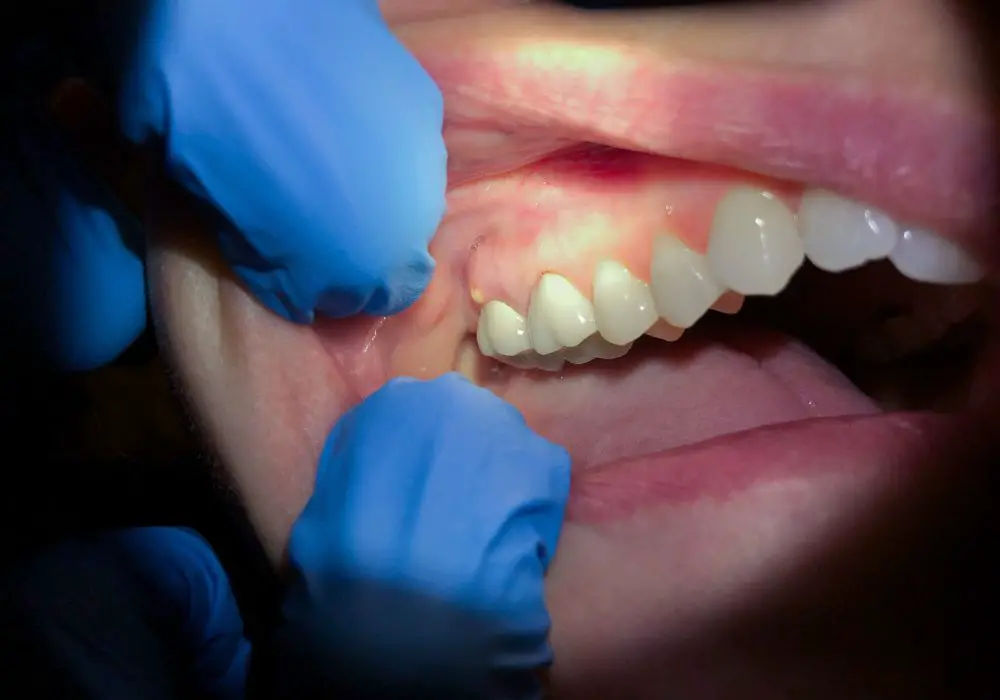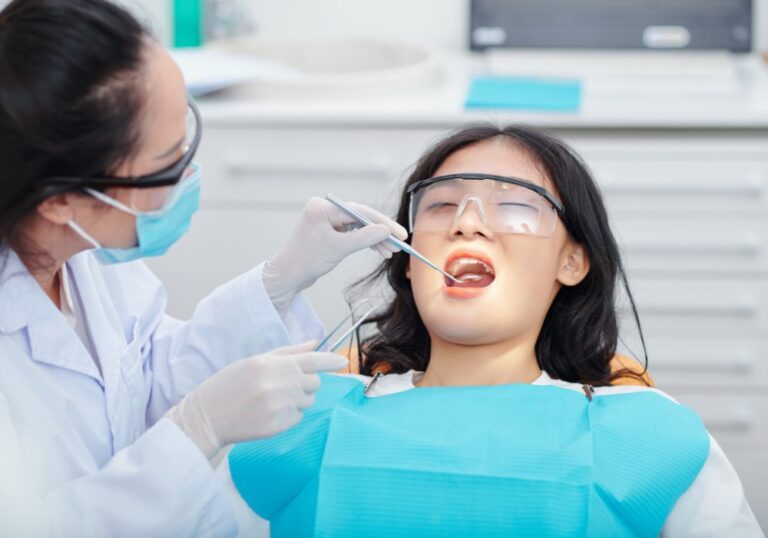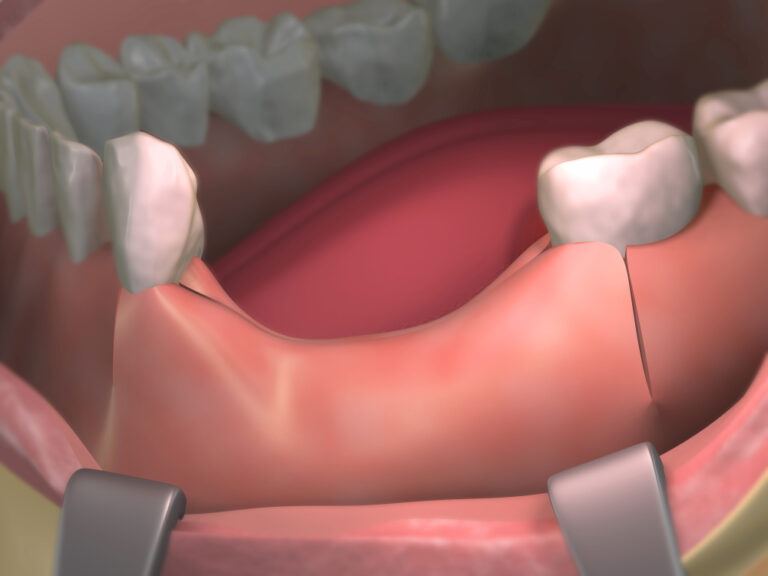If you’ve been experiencing dental pain or discomfort, you may be wondering if you have a tooth abscess. However, it’s not always easy to tell if you have a tooth abscess just by looking in the mirror. In fact, it’s possible to have a tooth abscess and not see it at all.
A tooth abscess is a pocket of pus caused by a bacterial infection. It can occur at different areas near the tooth for different reasons. A periapical abscess, for example, occurs at the tip of the root. If you have a tooth abscess, you may experience symptoms such as tooth sensitivity, pain when biting or chewing, fever, and swelling in your face or gums. However, not all tooth abscesses cause visible symptoms.
So, can you have a tooth abscess and not see it? The answer is yes. In some cases, a tooth abscess may be located deep within the gums or jawbone, making it impossible to see with the naked eye. That’s why it’s important to see a dentist if you’re experiencing dental pain or discomfort, even if you don’t see any visible signs of a tooth abscess.
Understanding Tooth Abscess
A tooth abscess is a pocket of pus that forms due to a bacterial infection in the mouth. It can occur in different areas near the tooth for various reasons. A periapical abscess occurs at the tip of the root, while a periodontal abscess occurs in the gums at the side of a tooth root.
Tooth abscesses can be painful, and they can also cause swelling in the face and neck. If left untreated, they can lead to serious complications such as the spread of infection to other parts of the body.
Some common causes of tooth abscesses include tooth decay, gum disease, and trauma to the tooth. Poor oral hygiene can also contribute to the development of a tooth abscess.
If you suspect that you have a tooth abscess, it is important to seek dental treatment as soon as possible. Your dentist will be able to diagnose the abscess and recommend the appropriate treatment, which may include antibiotics and drainage of the abscess.
In some cases, a root canal or tooth extraction may be necessary to remove the infected tooth and prevent the spread of infection. Your dentist will be able to determine the best course of treatment for your individual needs.
Prevention is key when it comes to tooth abscesses. Maintaining good oral hygiene, including regular brushing and flossing, can help prevent the development of tooth decay and gum disease. It is also important to see your dentist for regular check-ups and cleanings to catch any potential problems early on.
Hidden Tooth Abscess: Can You Have It?
When you think of a tooth abscess, you might imagine a painful, swollen area on your gum or a visible bump on your tooth. However, it is possible to have a tooth abscess and not see any visible signs of it. This is known as a hidden tooth abscess.
A hidden tooth abscess occurs when the infection is located deep within the tooth or surrounding tissue and does not cause any visible symptoms. This can be dangerous because the infection can spread to other parts of your body without you even realizing it.
Some common symptoms of a hidden tooth abscess include:
- Persistent bad breath or bad taste in your mouth
- Sensitivity to hot or cold temperatures
- Pain when biting or chewing
- Swollen lymph nodes in your neck
- Fever or chills
If you are experiencing any of these symptoms, it is important to see your dentist as soon as possible. They can perform a thorough examination and take X-rays to determine if you have a hidden tooth abscess.
Treatment for a hidden tooth abscess typically involves a root canal or extraction of the affected tooth. Antibiotics may also be prescribed to help fight the infection. It is important to follow your dentist’s instructions and complete the full course of antibiotics to ensure that the infection is completely gone.
In conclusion, a tooth abscess can be hidden and not visible to the naked eye. If you are experiencing any symptoms of a hidden tooth abscess, it is important to seek dental treatment right away to prevent the infection from spreading.
Symptoms of Tooth Abscess

If you have a tooth abscess, you may experience a range of symptoms. Here are some common symptoms to look out for:
- Severe, constant toothache: This is the most common symptom of a tooth abscess. The pain is usually throbbing and can spread to your jawbone, neck, or ear.
- Pain with hot and cold temperatures: You may experience pain or discomfort when you eat or drink hot or cold foods and beverages.
- Pain with pressure: You may feel pain or discomfort when you bite or chew.
- Fever: You may have a fever, which is a sign that your body is fighting an infection.
- Swelling in your face, cheek, or neck: You may notice swelling in your face, cheek, or neck, which can make it difficult to breathe or swallow.
- Bad breath or a bad taste in your mouth: You may have a bad taste in your mouth or bad breath, which is caused by the infection.
If you experience any of these symptoms, it’s important to see a dentist as soon as possible. A tooth abscess can lead to serious complications if left untreated, such as the infection spreading to other parts of your body.
Why You May Not See a Tooth Abscess
A tooth abscess is a painful condition that occurs when bacteria infects the dental pulp (innermost layer of the tooth). The infection can spread to the root and cause an abscess to form. The symptoms of a tooth abscess can be severe and include pain, swelling, sensitivity to hot and cold, and fever. However, in some cases, you may not see a tooth abscess even if you have one. Here are some reasons why:
1. Location
The location of the tooth abscess can affect whether or not you can see it. If the abscess is located on the back of a tooth or in between teeth, it may be difficult to see. In some cases, an X-ray may be needed to diagnose the abscess.
2. Size
The size of the abscess can also affect whether or not you can see it. If the abscess is small, it may not be visible to the naked eye. However, even a small abscess can cause significant pain and discomfort.
3. Gum Inflammation
Gum inflammation can also make it difficult to see a tooth abscess. If the gum tissue around the abscess is swollen and inflamed, it may cover the abscess and make it difficult to see. In some cases, the gum tissue may even cover the entire tooth, making it difficult to see any signs of an abscess.
4. Lack of Symptoms
In some cases, you may have a tooth abscess and not see it because you do not experience any symptoms. This is more common in chronic abscesses that develop slowly over time. However, even if you do not experience any symptoms, it is important to see a dentist for regular checkups to ensure that any dental problems are caught early.
In conclusion, a tooth abscess can be a painful and serious condition. However, it is possible to have an abscess and not see it. If you experience any symptoms of a tooth abscess, such as pain or swelling, it is important to see a dentist as soon as possible for diagnosis and treatment.
Diagnosing a Hidden Tooth Abscess

If you suspect that you have a hidden tooth abscess, it is important to seek dental care as soon as possible. While some abscesses may be visible, others may not be detectable without the help of a dental professional. Here are some ways that a dentist may diagnose a hidden tooth abscess:
- Dental X-rays: A dental X-ray can reveal the presence of an abscess or infection that is not visible to the naked eye. Your dentist may take X-rays from different angles to get a better view of the affected area.
- Visual exam: Your dentist may examine your mouth and gums for signs of swelling, redness, or other symptoms that may indicate an abscess. They may also gently probe the area to check for sensitivity or pain.
- Pulp testing: If the abscess is located in the pulp of the tooth, your dentist may perform a pulp test to check for signs of infection or inflammation. This involves applying a cold or heat stimulus to the tooth to see how it responds.
- CT scan: In some cases, a CT scan may be needed to get a more detailed view of the affected area. This can help your dentist determine the extent of the infection and plan the appropriate treatment.
It is important to note that not all abscesses cause visible symptoms, and some may not cause any pain or discomfort until they have progressed to a more advanced stage. For this reason, it is important to visit your dentist regularly for checkups and cleanings, even if you do not have any obvious dental problems.
Treatment Options for Tooth Abscess
If you have a tooth abscess, it is important to seek treatment as soon as possible to prevent the infection from spreading. Here are some treatment options that your dentist may recommend:
Antibiotics
Antibiotics are often prescribed to help fight the infection and prevent it from spreading. Your dentist may prescribe antibiotics if the infection is severe or if you have a weakened immune system.
Drainage
In some cases, your dentist may need to drain the abscess to remove the pus and relieve pressure. This can be done by making a small incision in the gum near the abscess.
Root Canal
If the abscess is caused by an infected tooth, a root canal may be necessary to remove the infected tissue and save the tooth. During a root canal, the dentist will remove the infected pulp from the tooth and clean out the root canals before sealing the tooth with a filling or crown.
Extraction
If the tooth is severely damaged or if the infection has spread to the surrounding bone, the tooth may need to be extracted. Your dentist will discuss replacement options with you, such as a dental implant or bridge.
Pain Management
To manage pain and discomfort, your dentist may recommend over-the-counter pain relievers or prescribe stronger medications. Applying a cold compress to the affected area can also help reduce swelling and relieve pain.
Remember, early treatment is key to preventing complications from a tooth abscess. If you suspect you have a tooth abscess, contact your dentist right away for an evaluation and treatment options.
Preventing Tooth Abscess

Tooth abscesses can be painful and uncomfortable, but they can also be prevented with good oral hygiene and regular dental check-ups. Here are some tips to help prevent tooth abscesses:
- Brush your teeth at least twice a day with fluoride toothpaste. Use a soft-bristled toothbrush and brush for at least two minutes each time.
- Floss daily to remove plaque and food particles from between your teeth and under your gumline.
- Use an antiseptic mouthwash to kill bacteria that can cause tooth decay and gum disease.
- Limit your intake of sugary and acidic foods and drinks. These can erode your tooth enamel and increase your risk of tooth decay and abscesses.
- Wear a mouthguard if you play contact sports to protect your teeth from injury.
- See your dentist regularly for check-ups and cleanings. Your dentist can detect early signs of tooth decay and gum disease and treat them before they develop into abscesses.
By following these tips, you can help prevent tooth abscesses and maintain good oral health. Remember, prevention is always better than treatment!
Frequently Asked Questions
How long can a tooth infection go untreated?
A tooth infection should not be left untreated for more than a few days. If you do not receive treatment, the infection can spread to other parts of your body, leading to serious health problems. It is important to see a dentist as soon as possible if you suspect you have a tooth infection.
Can a mouth abscess be hidden?
Yes, a mouth abscess can be hidden. It is possible for an abscess to form in the gums or jawbone without causing any visible symptoms. However, if left untreated, the abscess can cause severe pain and swelling.
What are the symptoms of a tooth infection?
The symptoms of a tooth infection can include pain, swelling, sensitivity to hot or cold, fever, and bad breath. If you experience any of these symptoms, it is important to see a dentist as soon as possible.
What should I do if a dental abscess bursts on its own?
If a dental abscess bursts on its own, you should rinse your mouth with warm salt water to help clean the area. You should also see a dentist as soon as possible to receive treatment for the infection.
Are there dangers associated with pulling an abscessed tooth?
There can be risks associated with pulling an abscessed tooth, especially if the infection has spread to other parts of your body. It is important to discuss the risks and benefits of tooth extraction with your dentist before undergoing the procedure.
Can a gum abscess be fatal?
While it is rare, a gum abscess can be fatal if the infection spreads to other parts of your body. It is important to see a dentist as soon as possible if you suspect you have a gum abscess to receive proper treatment and prevent any serious complications.






